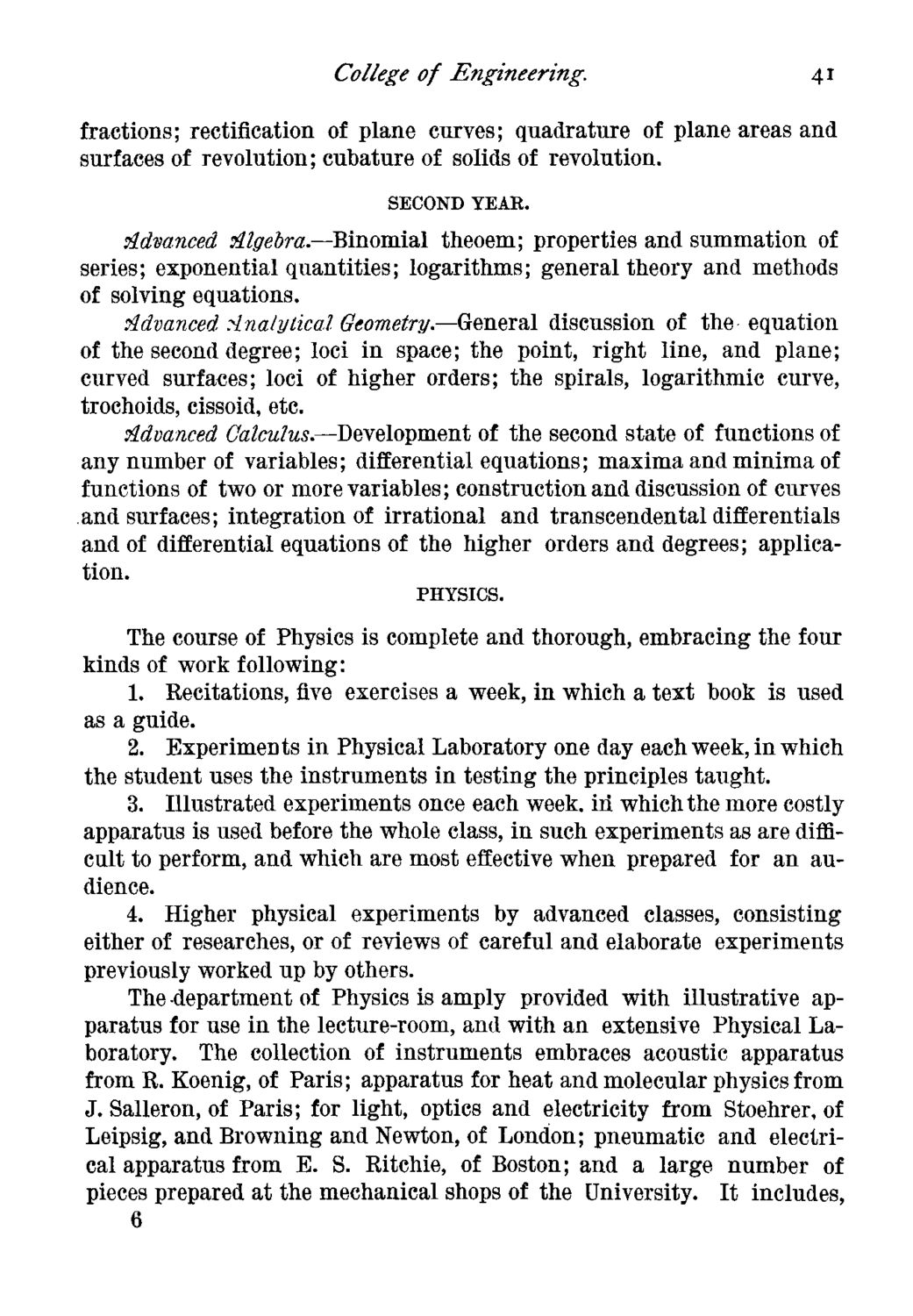| |
| |
Caption: Course Catalog - 1881-1882
This is a reduced-resolution page image for fast online browsing.

EXTRACTED TEXT FROM PAGE:
College of Engineering. 41 fractions; rectification of plane curves; quadrature of plane areas and surfaces of revolution; cubature of solids of revolution. SECOND YEAH. Advanced Algebra.—Binomial theoem; properties and summation of series; exponential quantities; logarithms; general theory and methods of solving equations. Advanced Analytical Geometry—General discussion of the equation of the second degree; loci in space; the point, right line, and plane; curved surfaces; loci of higher orders; the spirals, logarithmic curve, trochoids, cissoid, etc. Advanced Calculus.—Development of the second state of functions of any number of variables; differential equations; maxima and minima of functions of two or more variables; construction and discussion of curves and surfaces; integration of irrational and transcendental differentials and of differential equations of the higher orders and degrees; application. PHYSICS. The course of Physics is complete and thorough, embracing the four kinds of work following: 1. Recitations, five exercises a week, in which a text book is used as a guide. 2. Experiments in Physical Laboratory one day each week, in which the student uses the instruments in testing the principles taught. 3. Illustrated experiments once each week, id which the more costly apparatus is used before the whole class, in such experiments as are dimcult to perform, and which are most effective when prepared for an audience. 4. Higher physical experiments by advanced classes, consisting either of researches, or of reviews of careful and elaborate experiments previously worked up by others. The department of Physics is amply provided with illustrative apparatus for use in the lecture-room, and with an extensive Physical Laboratory. The collection of instruments embraces acoustic apparatus from R. Koenig, of Paris; apparatus for heat and molecular physics from J. Salleron, of Paris; for light, optics and electricity from Stoehrer, of Leipsig, and Browning and Newton, of London; pneumatic and electrical apparatus from E. S. Ritchie, of Boston; and a large number of pieces prepared at the mechanical shops of the University. It includes, 6
| |